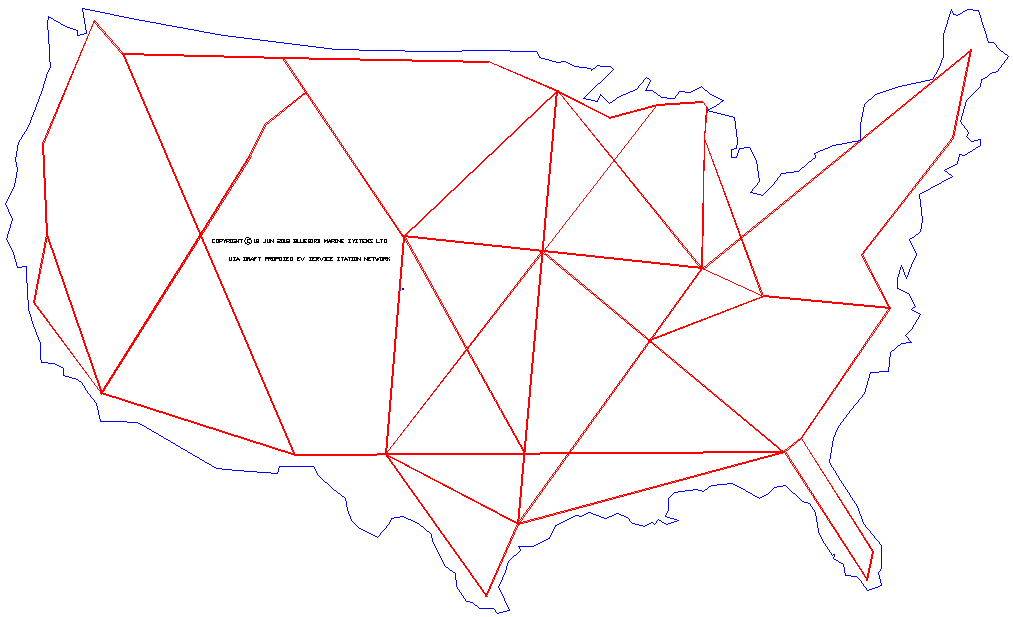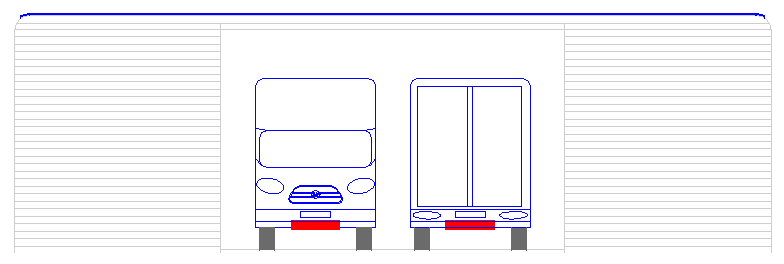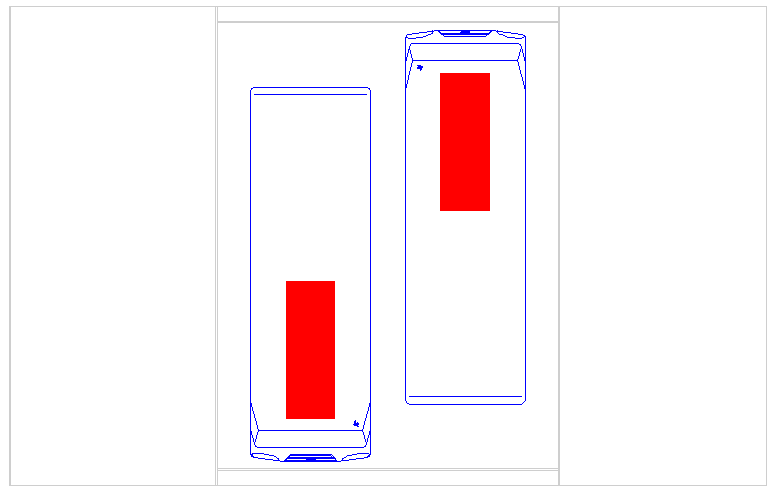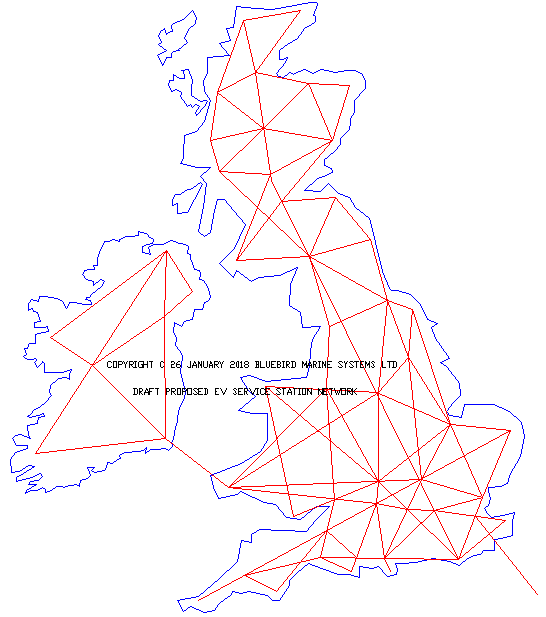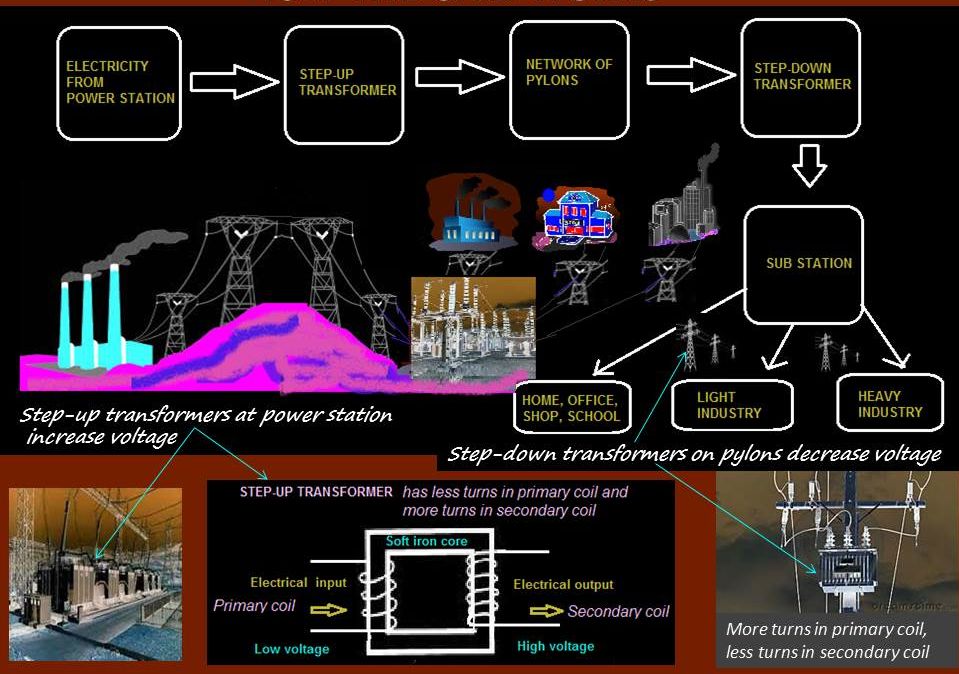NATIONAL GRID
A
National Grid is the high-voltage electric power transmission network in
any electrified country, connecting power stations and major substations and
ensuring that electricity generated anywhere in that nation, can be used to satisfy demand anywhere else in the
country
In the United States, the entire electricity grid consists of hundreds of thousands of miles of high-voltage power lines and millions of miles of low-voltage power lines with distribution transformers that connect thousands of power plants to hundreds of millions of electricity customers all across the country.
Mains
electricity comes in to homes in the USA at voltages of 120 and 240 Volts (V).
It
was Nikola Tesla who established the principles of three-phase
high-voltage electric power distribution while he was working for
Westinghouse in the United
States in the early 19th Century.
Electricity comes from various sources and types of providers
The origin of the electricity that consumers purchase varies. Some electric utilities generate all the electricity they sell using just the power plants they own. Other utilities purchase electricity directly from other utilities, power marketers, and independent power producers or from a wholesale market organized by a regional transmission reliability organization.
The retail structure of the electricity industry varies from region to region. The company selling you power may be a not-for-profit municipal electric utility; an electric cooperative owned by its members; a private, for-profit electric utility owned by stockholders (often called an investor-owned utility); or in some states, you may purchase electricity through a power marketer. A few federally owned power
authorities - including the Bonneville Power Administration and the Tennessee Valley Authority, among others—also generate, buy, sell, and distribute power. Local electric utilities operate the distribution system that connects consumers with the grid regardless of the source of the electricity.
The process of delivering electricity
The electricity that power plants generate is delivered to customers over transmission and distribution power lines. High-voltage transmission lines, such as those that hang between tall metal towers, carry electricity over long distances to where consumers need it. Higher voltage electricity is more efficient and less expensive for long-distance electricity transmission. Lower voltage electricity is safer for use in homes and businesses. Transformers at substations increase (step up) or reduce (step down) voltages to adjust to the different stages of the journey from the power plant on long-distance transmission lines to distribution lines that carry electricity to homes and businesses.
Evolution of the electric power grid
At the beginning of the 20th century, more than 4,000 individual electric utilities operated in isolation from each other. As the demand for electricity grew, especially after World War II, utilities began to connect their transmission systems. These connections allowed utilities to share the economic benefits of building large and often jointly-owned electric generating units to serve their combined electricity demand at the lowest possible cost. Interconnection also reduced the amount of extra generating capacity that each utility had to hold to ensure reliable service during times of peak demand. Over time, three large, interconnected systems evolved in the United States.
U.S. electrical systems are now interconnected
Local electricity grids are interconnected to form larger networks for reliability and commercial purposes. At the highest level, the U.S. power system in the Lower 48 states is made up of three main interconnections, which operate largely independently from each other with limited transfers of electricity between them.
1. The Eastern Interconnection encompasses the area east of the Rocky Mountains and a portion of the Texas panhandle.
2. The Western Interconnection encompasses the area from the Rockies to the west.
3. The Electric Reliability Council of Texas (ERCOT) covers most of Texas.
The Eastern and Western Interconnections in the United States are also linked with the Canadian power grid. The network structure of the interconnections helps maintain the reliability of the grid by providing multiple routes for power to flow and allowing generators to supply electricity to many load centers. This redundancy helps prevent transmission line or power plant failures from causing interruptions in service to retail customers.
Balancing authorities manage grid operations
The three interconnections describe the large-scale physical structure of the grid. The regional operation of the electric system is managed by entities called balancing authorities, which ensure that electricity supply constantly matches power demand. Most of the balancing authorities are electric utilities that have taken on the balancing responsibilities for a specific part of the power system. All of the regional transmission organizations in the United States also function as balancing authorities. ERCOT is unique in that the balancing authority, interconnection, and the regional transmission organization are all the same entity and physical system.
A balancing authority ensures that electricity demand and supply are finely balanced to maintain the safe and reliable operation of the power system. If demand and supply fall out of balance, local or even widespread blackouts can result. Balancing authorities maintain appropriate operating conditions for the electric system by ensuring that a sufficient supply of electricity is available to serve expected demand, which includes managing transfers of electricity with other balancing authorities.
Electric reliability organizations set standards for grid operations
Electric utilities are responsible for maintaining the safety of their systems and planning for the future power needs of their customers. Initially, voluntary standards were developed by the electric power industry to ensure coordination of linked interconnection operations. Today, mandatory reliability standards for planning and operating power systems and for addressing security concerns at critical electrical infrastructure are in place. The North American Electric Reliability Corporation and its member organizations developed and enforce these standards, which FERC approved. In Canada, Canadian regulators fill this role.
